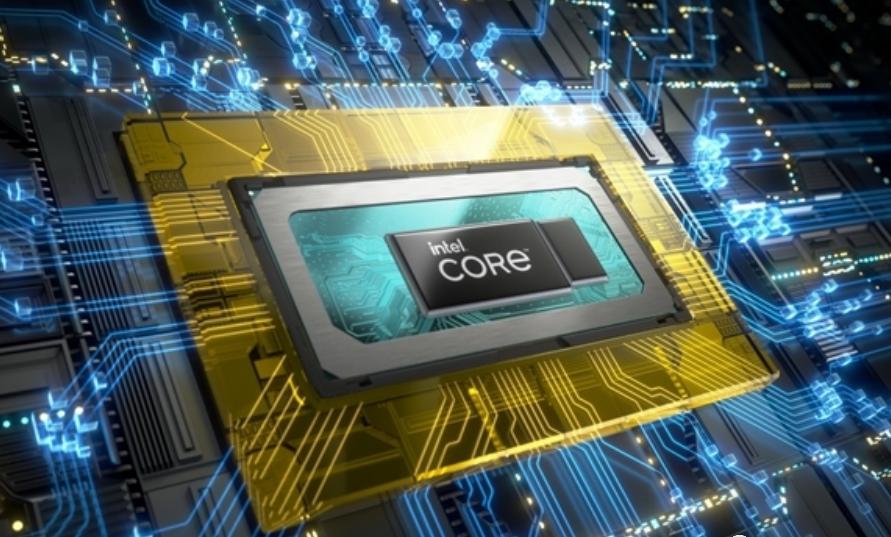The annual CES Consumer Electronics Exhibition came to an end in the early hours of this morning, as representatives of leading upstream chip manufacturers, Intel and AMD have brought a large wave of new products, of which the mobile notebook platform iteration chip is the most eye-catching. Intel released the 45W H series/28W P series and the 15/9W U series new products, from game books to all-round books to thin and light books. The AMD Ryzen™ 6000 H/U series has been upgraded to a 6nm process Zen3+ core, while integrating RDNA2 GPUs to improve gaming performance.
Intel
Flagship i9-12900HK game performance increased by 40%

The 12th generation Core mobile platform processors i9-12900HK and i9-12900H are 14 cores (6 performance cores + 8 energy efficiency cores) 20 threads, 24MB L3 cache, large core frequency 2.5-5.0GHz, small core frequency 1.8-3.8GHz, integrated core display 96 units, 1.45GHz; maximum accelerated power consumption up to 115W.
In Intel's official performance and power chart, the 12th generation mobile version of the Core i9 achieves faster performance per watt than the M1 Max chip, but overall, the M1 Max can still run at much lower wattage than Intel's top mobile products.
In addition to the performance improvement, the 12th generation Core Mobile Edition also supports DDR5 memory, but the desktop version of PCI-E 5.0 is cut to support only PCI-E 4.0/3.0, of which PCI-E 4.0 x8 gives discrete graphics, two PCI-E 4.0 x4 to SSDs, and PCI-E 3.0 x12 to extend peripherals.
For Intel's such a plan, it is actually easy to understand. Unlike desktop PCs, there is not much room for laptops to upgrade themselves, and at present, neither graphics cards nor SSDs have the corresponding devices that support PCI-E 5.0, so this upgrade is "ahead of its time", perhaps waiting for the time to mature, the 13th generation Core Mobile edition will embed PCI-E 5.0 features.
AMD
Ryzen 6000 H/U Series
GPU performance leaps and for the first time supports light chasing
AMD officially released the Ryzen 6000 H/U series, both of which have been upgraded to Zen3+ cores and integrated with RDNA2 GPUs. The manufacturing process has also changed from TSMC 7nm to 6nm, and there is also EUV polar ultraviolet lithography technology, which claims to increase the density by up to 18% compared with the first generation of 7nm transistors.
In addition to the performance improvements, the new platform has been upgraded to support more new technologies/industry specifications: for example, memory supports the new generation of DDR5-4800, LPDDR5-6400 (no longer supports DDR4); extended links support PCI-E 4.0, of which 8 are distributed to discrete graphics cards, 4x to NVMe SSDs, 4 to NVMe/SATA SSDs, and 4 to general expansion peripherals; USB supports USB4 for the first time, with a maximum speed of 40Gbps The network supports Wi-Fi 6E and Bluetooth LE 5.2, of which the Wi-Fi 6E solution comes from AMD's cooperation with Qualcomm and MediaTek.
In terms of product specifications, the Ryzen 6000H series has launched eight models, which continue to be divided into HS 35W, H 45W, HX 45W+ versions. Flagship model Ryzen™ 9 6980HX, embedded 8 cores 16 threads, L2 cache 4MB, L3 cache 16MB, reference frequency 3.3GHz, the highest acceleration frequency reached 5.0GHz for the first time in the Zen family, GPU integration of 12 compute units, 768 stream processors, acceleration frequency up to 2.4GHz.
It is worth mentioning that this time, the GPU of the Ryzen 6000 series mobile platform has been upgraded to the latest RDNA2 in one step, and it integrates up to 12 computing units (in groups of two), that is, 768 stream processors, plus the highest frequency of 2.4GHz, 1.5 times the memory bandwidth, 2 times the L2 cache and rendering backend. RDNA2 is also the world's first built-in GPU to support ray tracing.
It has to be mentioned that according to AMD data, global PC shipments have increased by 30% in the past two years, of which notebooks have soared by 49%, and global PC shipments have reached a record 350 million units in 2021. With such a good market environment, in 2022, Intel and AMD's new generation of notebook platform chips have focused on the improvement of performance and the decline in power consumption, of course, AMD took the lead in making great strides forward on the embedded GPU, the first support for light chasing technology, I believe that the game notebook based on this chip will have a smoother and silkier, immersive game experience, let us wait for the good news.